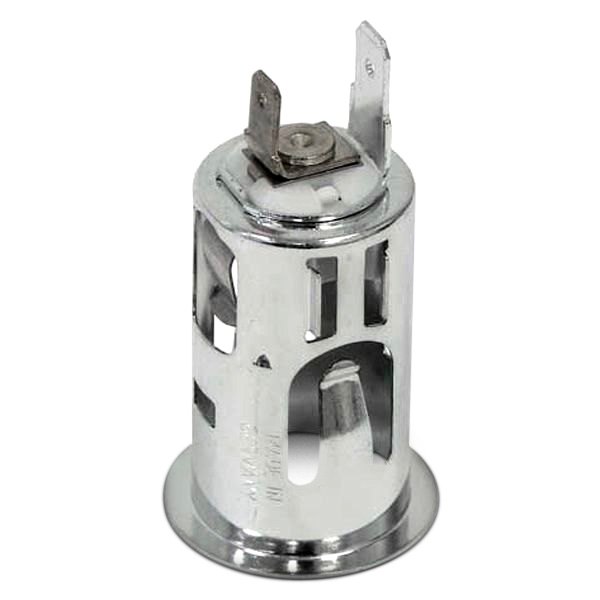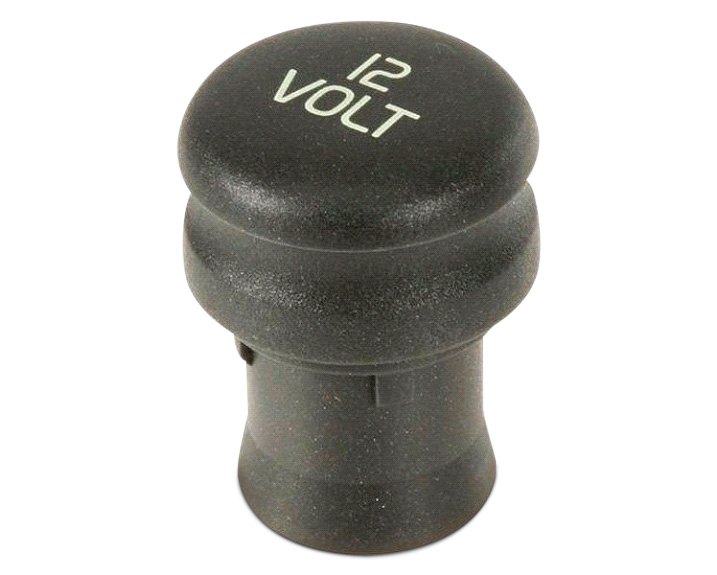Go to any car show where vehicles of the 1950s and 1960s are on display, and look past the shiny paint and chrome. Stick your head through an open window and look at each interior door panel. Chances are, especially on the upmarket brands like Cadillac and Lincoln, you'll spot an armrest with a built-in ashtray and cigarette lighter - for EACH outboard seating position. Yes, enough people smoked that these were considered almost a necessity for luxury car buyers.
Fast forward to today, and the car's ashtray has become a thing of the past; yet, "the lighter socket", now more commonly called the "12 Volt (12V) accessory socket" is still found in multiple locations. The driver might have ready access to two or three; they are also likely found in the front and rear center consoles as well as the wayback in most SUVs. Of course, today's passengers are using them to provide power to cell phones, radar detectors, GPS systems, action cameras, even some portable appliances! The drivers of the 1950s were NOT reading about these futuristic daydreams in their magazines of the day, yet here we are, ever-dependent on our cars to provide the juice we need for our electronic necessities.
And necessities they have become, especially our phones. So it's somewhat understandable that panic sets in when the 12V socket in our car or truck stops working, especially if the phone battery is close to depletion. What can you do? Must you take it in to a dealer, or is there any chance of making a repair yourself? We again have been aware that the question "how do I fix my 12V socket?" is one of the more popular searches on Google and YouTube, and therein lies the purpose of this article: to show you, the vehicle owner, that it is within your skill set to at least diagnose, if not outright repair, your inoperative 12V socket. Like other articles in this DIY series, it's important to stay organized and follow a logical diagnostic path (which is another way of saying don't rush out to purchase a replacement socket just yet).
The Problem May Not Be The Vehicle
The first diagnostic step is gaining a better understanding of your problem. All you know so far is that when you plug in your phone/Nav/camera/whatever, "it doesn't work". Are you doing this in a car where it worked yesterday, or are you in a different car? This is important because in some vehicles, the ignition must be ON for power to flow to the socket. If the car is new to you, once the engine is idling, you can be assured that the ignition is on.

Next: try your device in a different socket. Most cars and trucks today have more than one. If it works in a different socket, then you've already narrowed it down to just one socket, and we will get back to that. But if your device works in none of the vehicle's sockets, it's time to either try a different device, or try a different car. The point of taking a few minutes for all this testing is to determine if the problem is the device or charging cable itself. If you cannot get your device to work, yet another device does work, it's obvious where the fault lies. Hopefully the problem is with a replaceable charging cable; cables should be available from the company that made your device, and it's also worth checking on CARiD as some cables are available from us.
The Problem May Not Be Power To The Socket
If you've determined that your device doesn't charge in one particular socket but does charge in other sockets, either in the same car or a different car, we still have not conclusively found the problem. With the ignition key off, take a look inside the socket itself for any obvious blockage or damage. Typical possible findings include liquid spillage (soda pop can be especially problematic), loose debris (an errant peanut or cracker crumb), or a toy for which a toddler found a tempting hiding spot. Experienced technicians have stated that the single most common item they find accidentally dropped into power outlets is a coin (change receptacles are sometimes immediately next to power sockets). Do NOT use a metal object as a tool to dislodge something; if the socket is "live" you could cause a short and/or injure yourself. If absolutely necessary, a plastic or wooden tool like a plastic knife or wooden skewer can be used.
If the socket needs to be cleaned of something messy, a best practice would be to disconnect the battery before proceeding. Use paper towels and gentle cleaners to mop up as much of the mess as possible, and thoroughly dry the area as best possible before reconnecting the battery. Then try your device again to see if you've restored functionality. If not, you may need to resort to replacing the socket, which we cover later on.
If you didn't find anything which may have entered the socket inadvertently, it's still worth taking a few extra moments for a longer gander. Do you see any physical damage, such as a bent metal tang or a deformed housing? Are there any black marks as if a short may have occurred? When was the socket last used? It has happened that a charging cord other than the one that's normally used may have been inserted. Not all such cords are perfectly formed, and there have been cases where a defective cord did damage to the socket. If in doubt, compare the appearance of the inoperative socket with a good socket: they should basically look the same. If yours is damaged, there may be no choice but to replace it.
Always Check The Fuses Next
We've said this so often, yet it always bears repeating: before presuming that any device is broken, check the car's fuses. For starters, get your hands on the car's owner's manual which will tell you the location of the fuse boxes. Note the plural here: most modern machinery has more than one fuse box, typically one under the hood AND one under the dash. You may need to check fuses in both boxes, so be thorough.
Your owner's manual, or possibly a label on the underside of the fuse box cover, will detail which devices are covered by which fuses. Some car makers may still call them "cigarette lighters", but more likely you're looking for terms like 12V "power socket", "access socket", "power outlet", or similar. It's a best practice to remove each fuse you're checking; hold it up to good light to see if the internal wire is broken; it if is, or if there is any doubt, replace the fuse.

Even better, if you have a test light or digital multimeter (DMM), it can be used to determine if voltage is present on both sides of an installed fuse. (Read all about using a DMM at our helpful article entitled Digital Multimeter Basics.) Finally, another hint to consider when checking fuses is to read if other devices in the car are protected by the same fuse. If a fuse protects two power outlets, and one works and one doesn't, then the problem is not the fuse!


Replacing The Power Socket
If the fuses check out ok yet the socket still does not work there is still some remote chance that there is an open circuit between the fuse and the socket. Tracing and repairing such a wiring fault is beyond the scope of this article. If you're handy with a DMM, you can make spot checks along the way (but even doing that on a modern car means exposing the wiring harness).
You've done your due diligence up to now: you know it's not the device, nor is there any external blockage in the socket, and it's not a fuse problem. The next step involves removing the accessory socket for likely replacement. The ease or difficulty of this job will vary a lot from manufacturer to manufacturer, and will also depend on the socket's location (one mounted in a door armrest might be easier than one mounted in a dashboard center console). Always start by DISCONNECTING THE BATTERY. Check any service literature you have for your particular vehicle. If you're lucky, a bezel on the outside of the socket can be turned counterclockwise and removed, which will allow the socket to be pulled out without disturbing anything else.


In most cases, there will be only two wires attached to the socket: one for power, and one for ground. It's been an industry standard for years to color the ground wire black and the power wire red or blue, but these are not hard and fast rules. If you feel confident and have had some electrical experience, you can temporarily reconnect the battery and use a test light or DMM to test for voltage at the power wire; this would be your final confirmation that the socket itself is defective, if you confirm power at the feed wire. (Also test the ground wire with the continuity function of your DMM, placing the 2nd probe of the DMM at a known good ground.)
Installation is the reverse of removal. If you temporarily reconnected the battery, we suggest disconnecting it, installing the new socket and/or wiring, then testing the socket with battery connected once again before buttoning everything back up.
12V Power Outlet Repair Parts We Sell
We have a wide range or repair parts, both vehicle-specific and universal, which will allow you to complete this repair. Note that we still entitle this category "Car Cigarette Lighters & Parts" because we cater to vehicles of all models and model years, including those with cigarette lighters! Also note that you will find this category in two different locations for your convenience: it's under "Electrical Parts" within the "Repair Parts" Department, and it's in "Interior Parts" under the "Body Parts" Department.

Depending on the age and condition of your vehicle, you may want to consider fresh connector wires along with the new socket. A new replacement power cap can help block any future spills! An unmarked new bezel can help restore that factory appearance. Ordering from CARiD is fast and easy, so taking a few extra moments to purchase all the parts you'll need will ensure that the repair is both correct and thorough.

